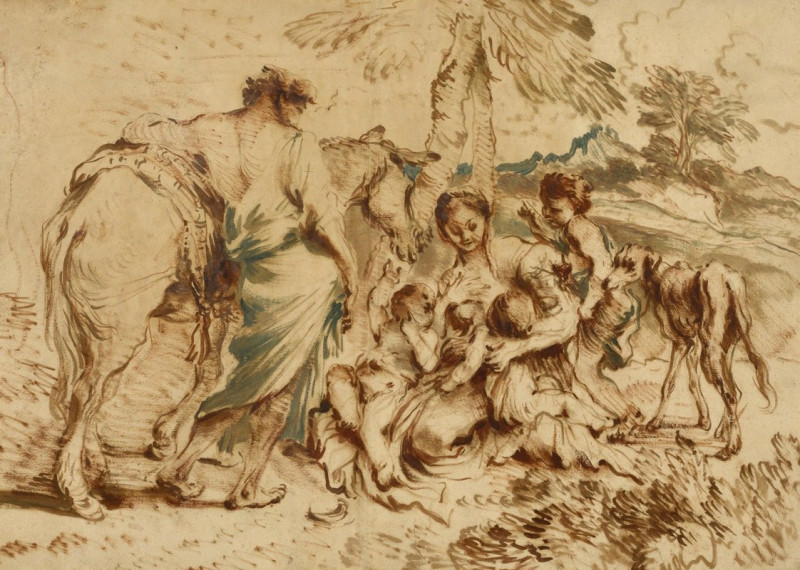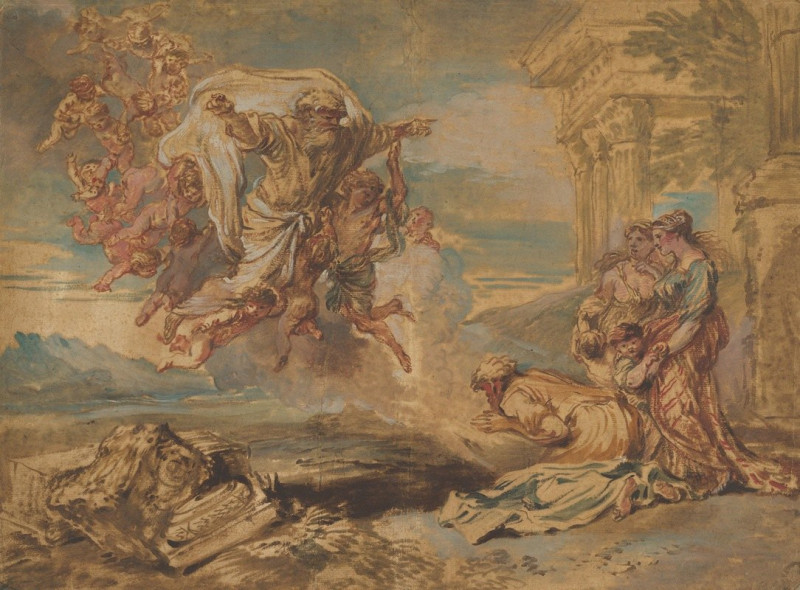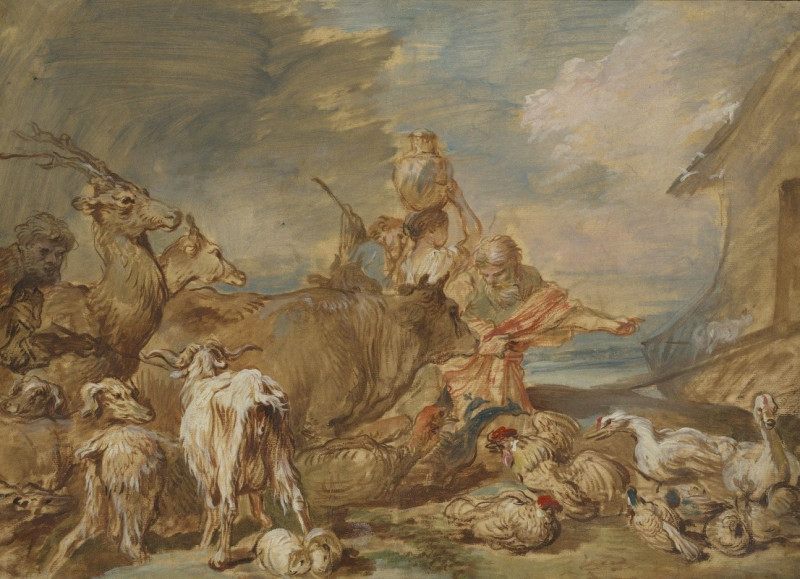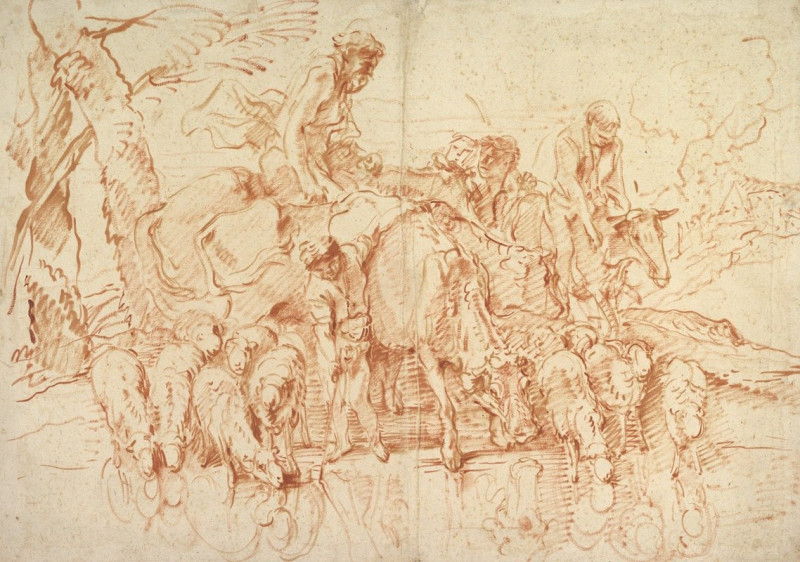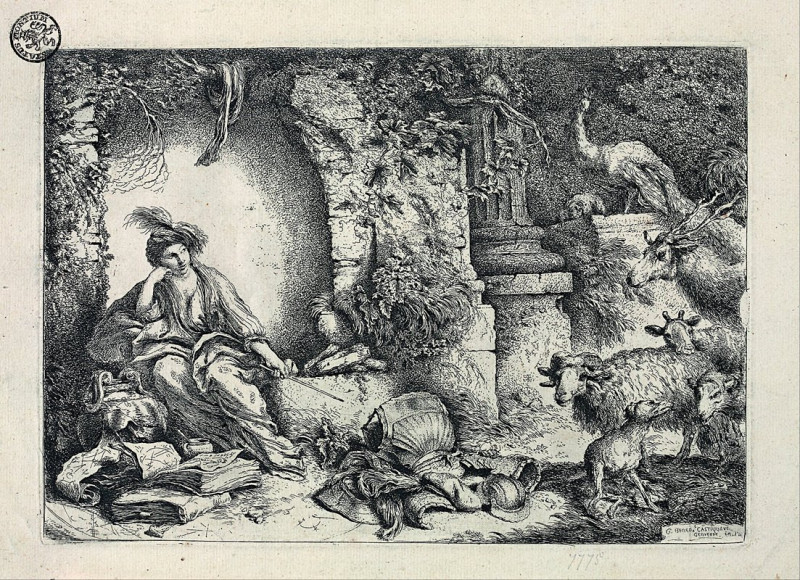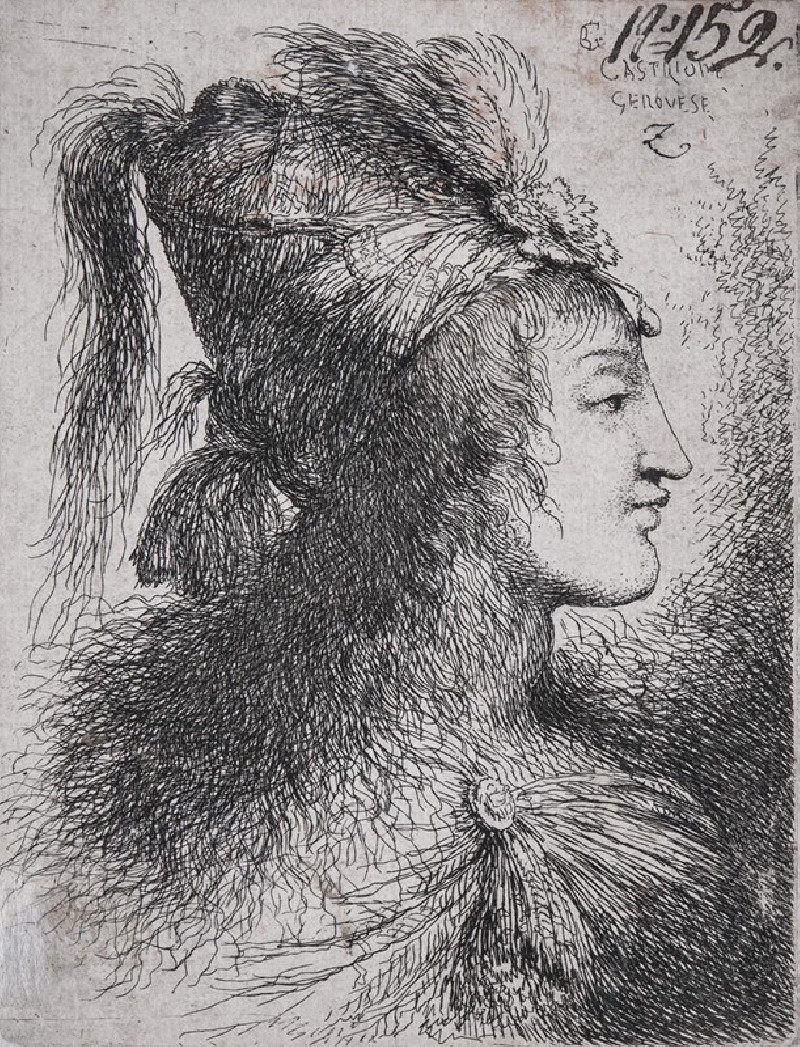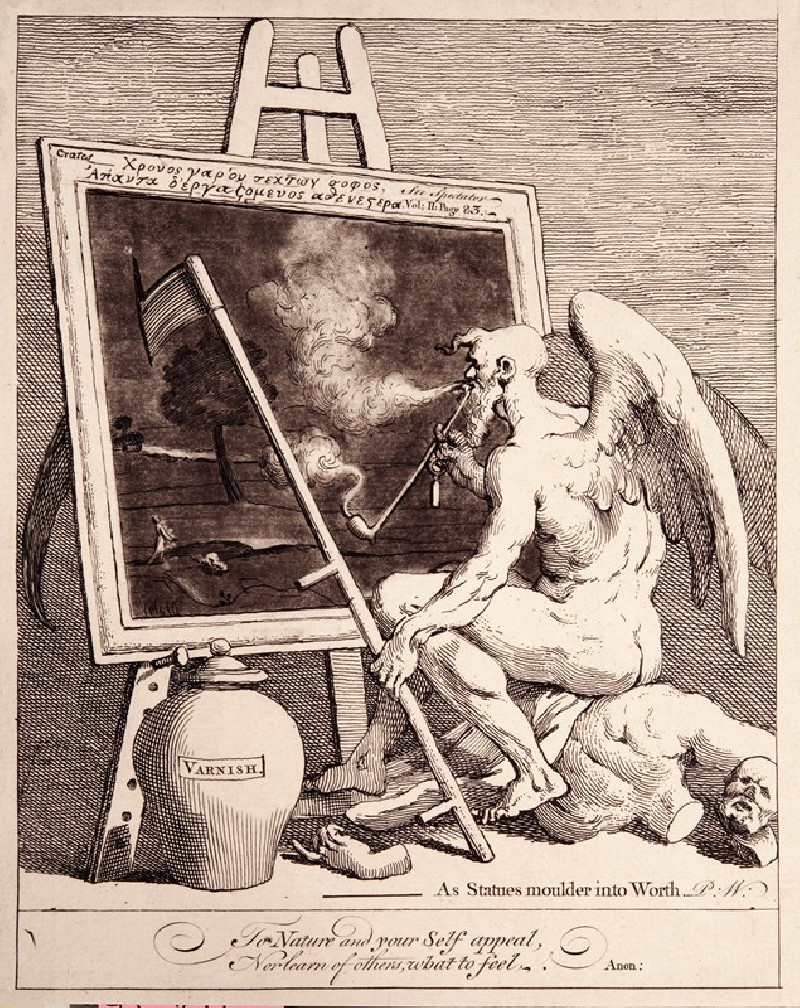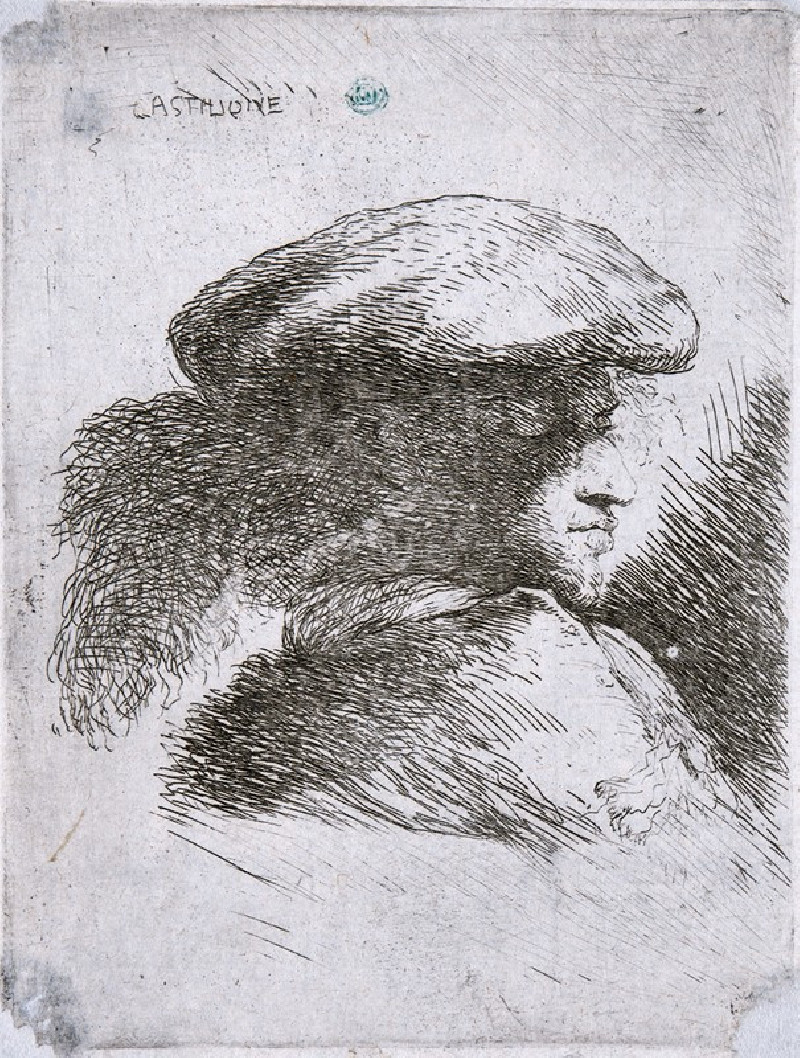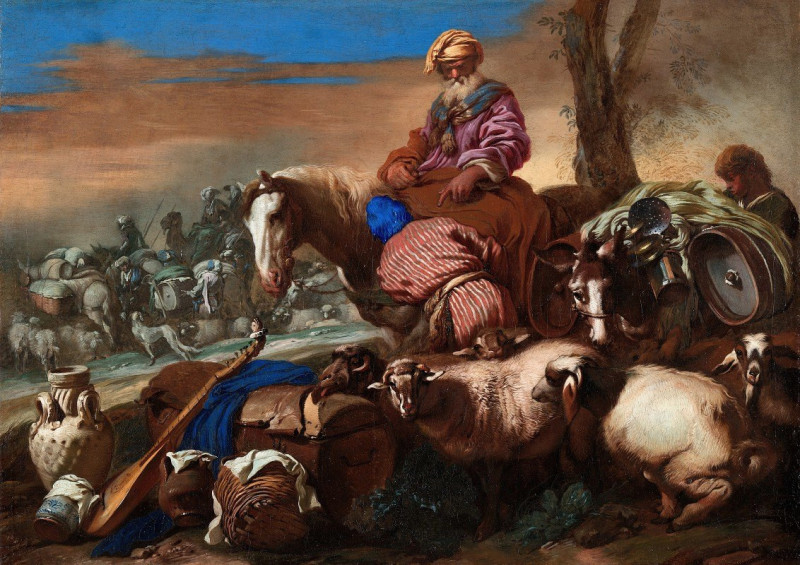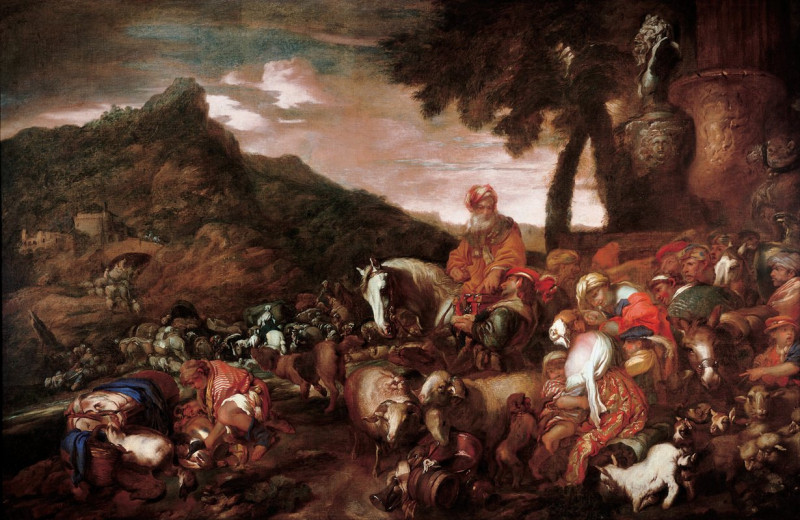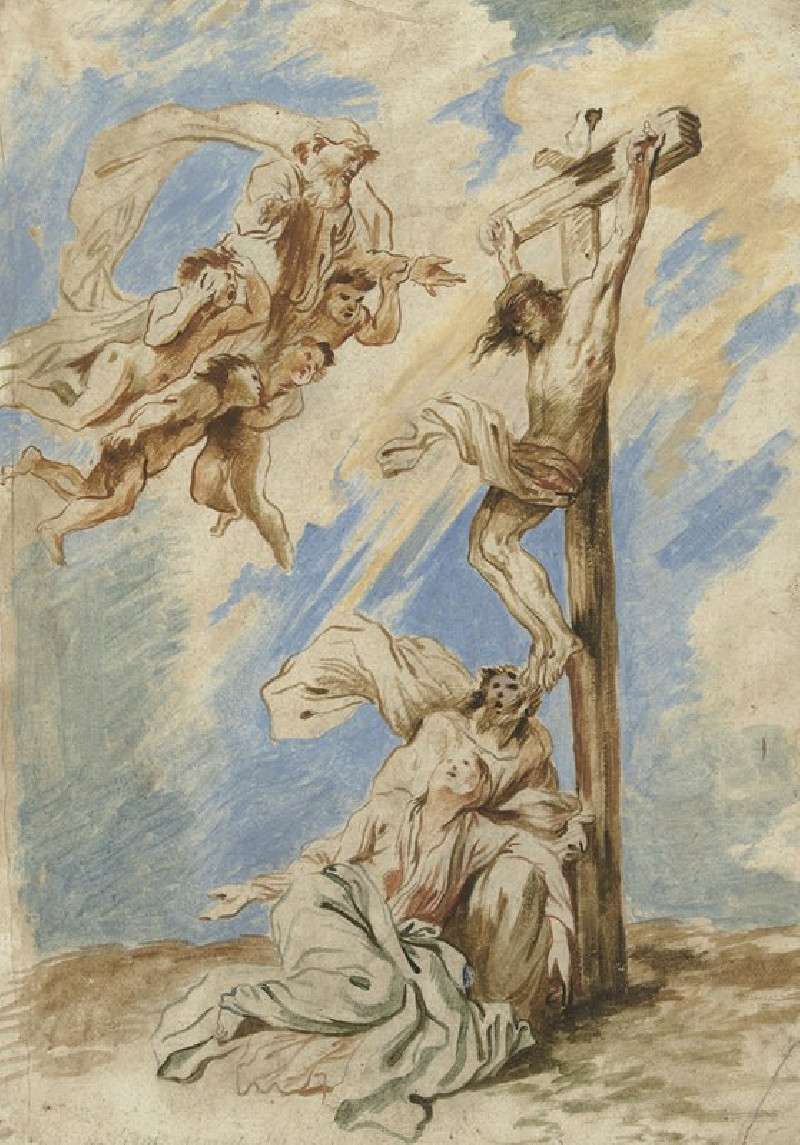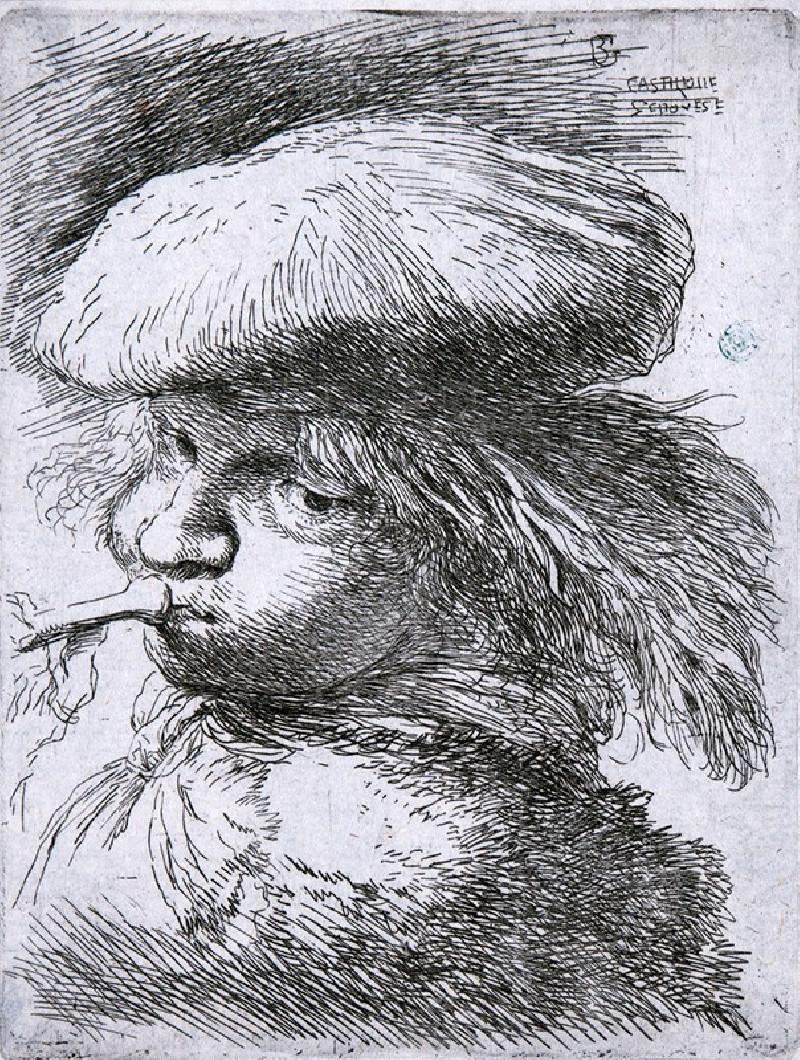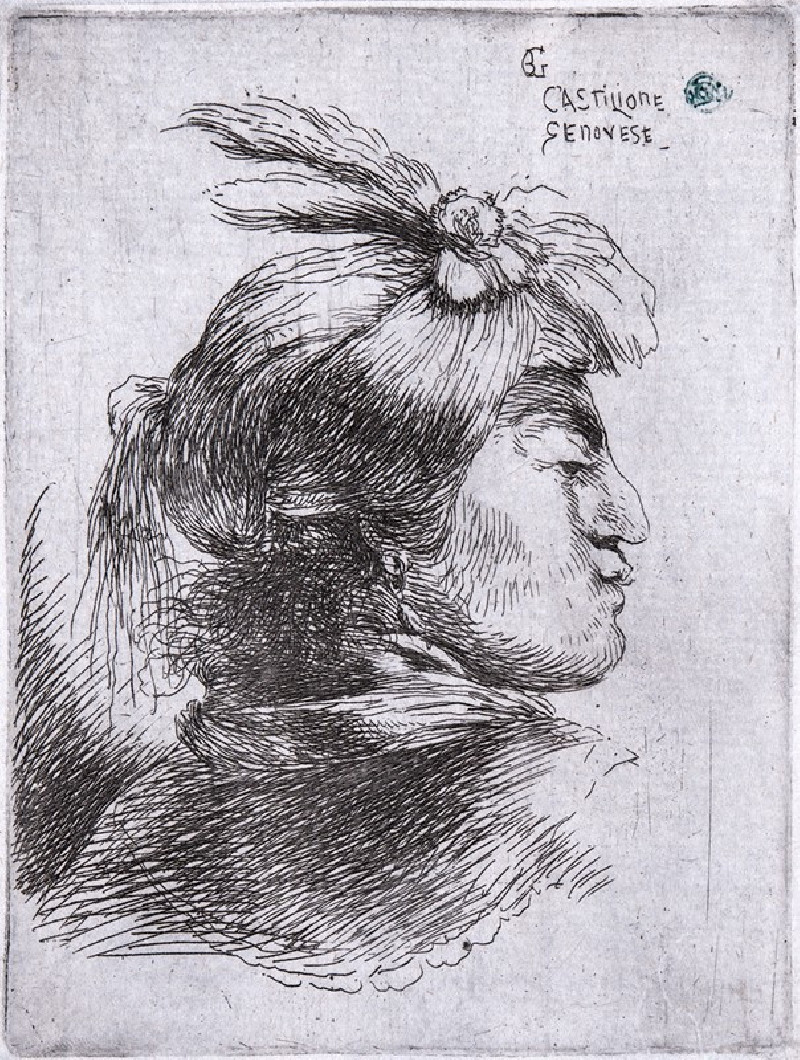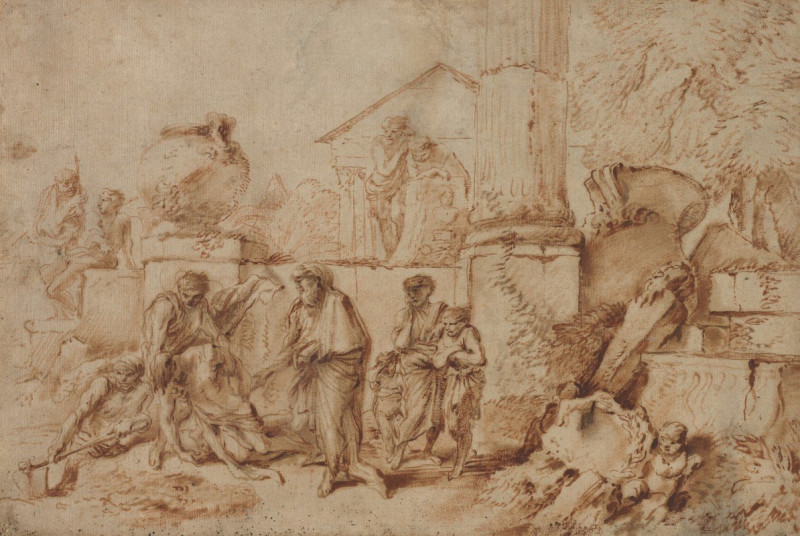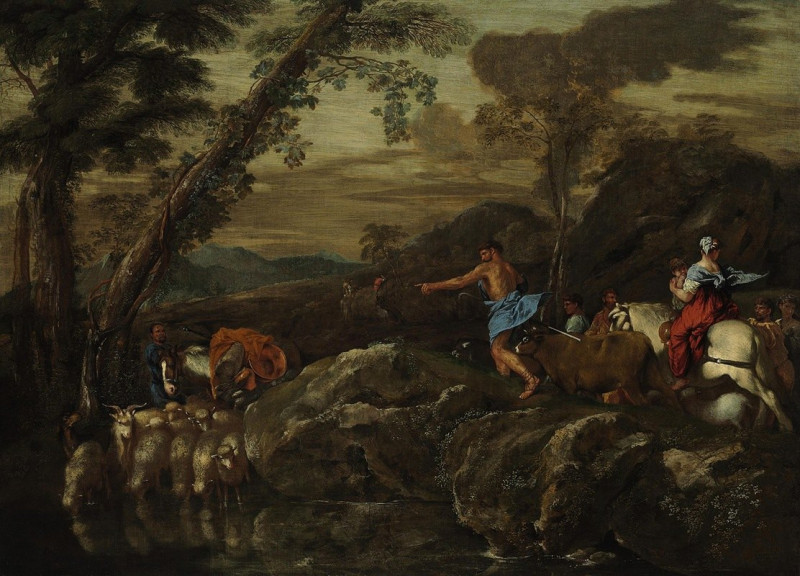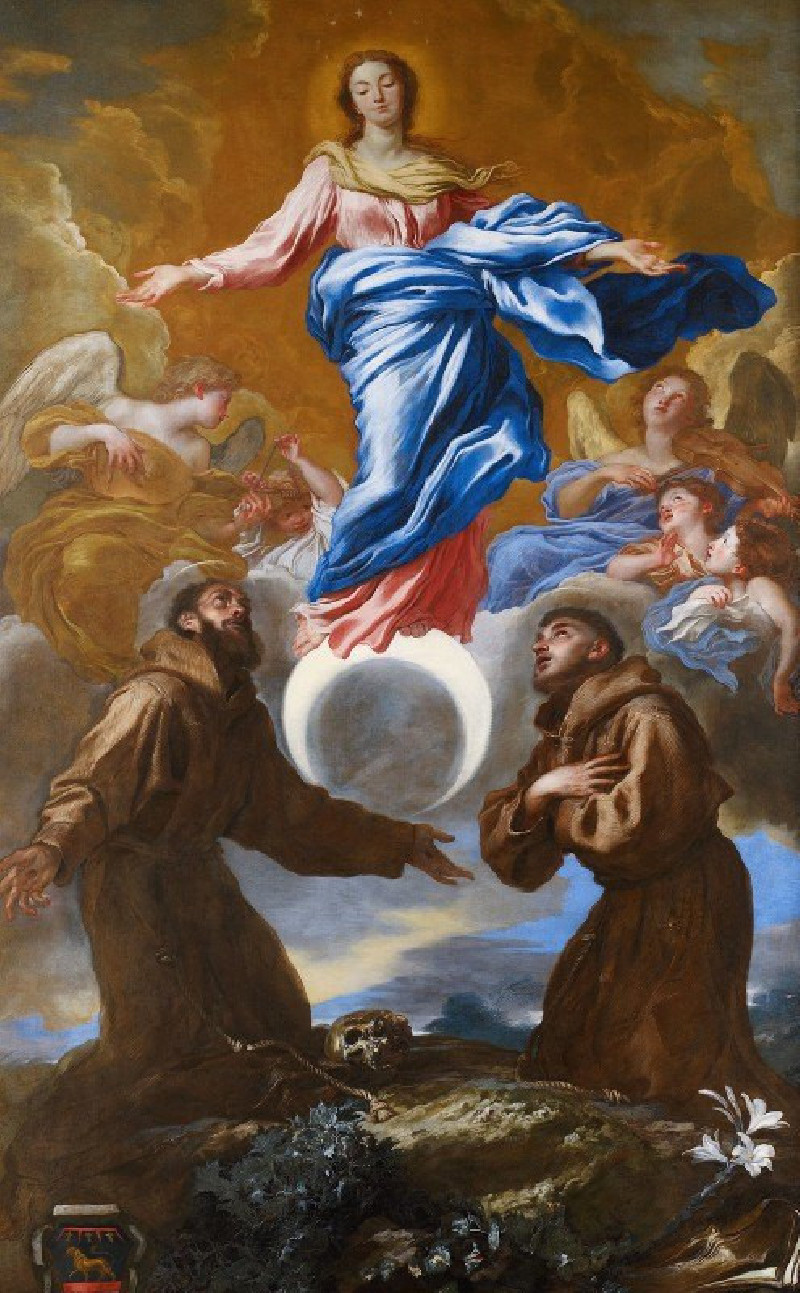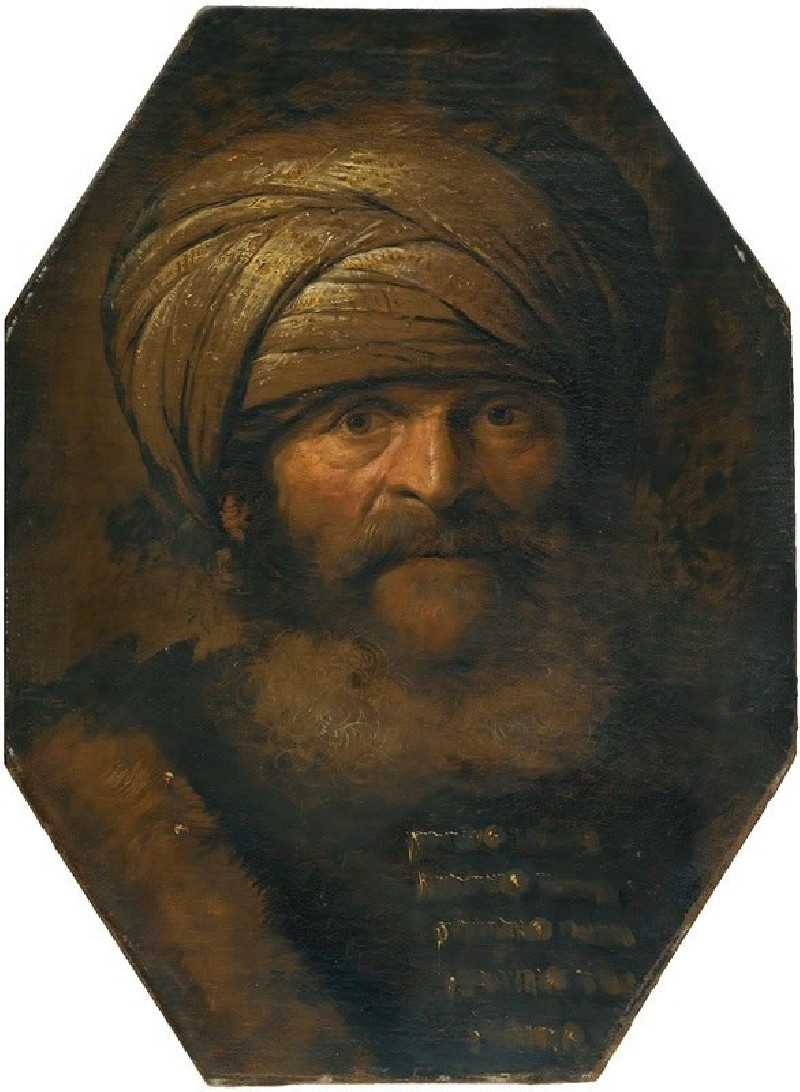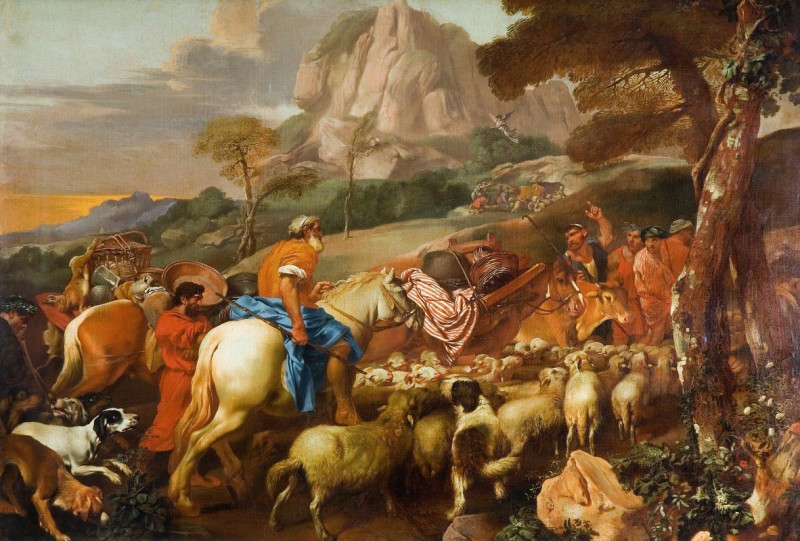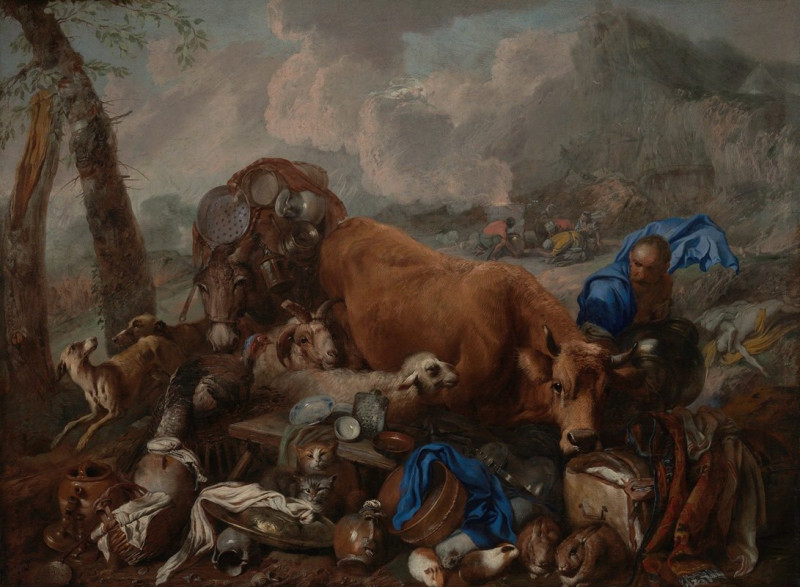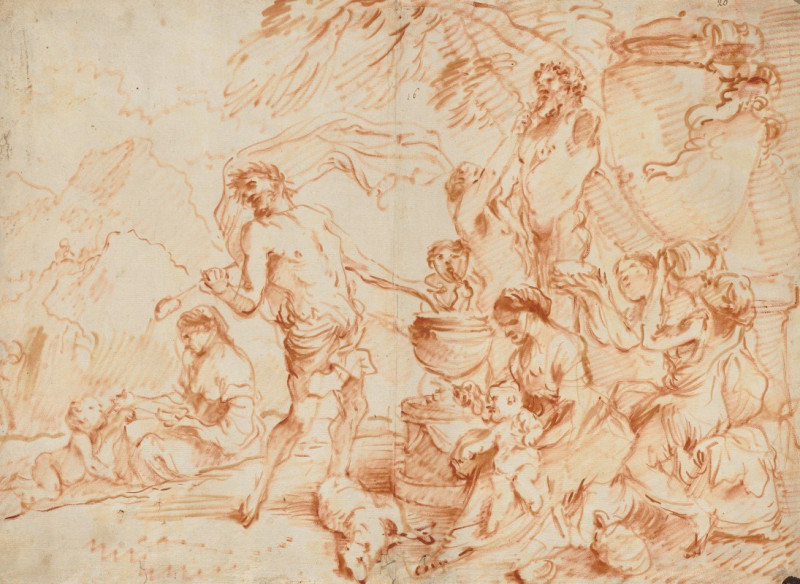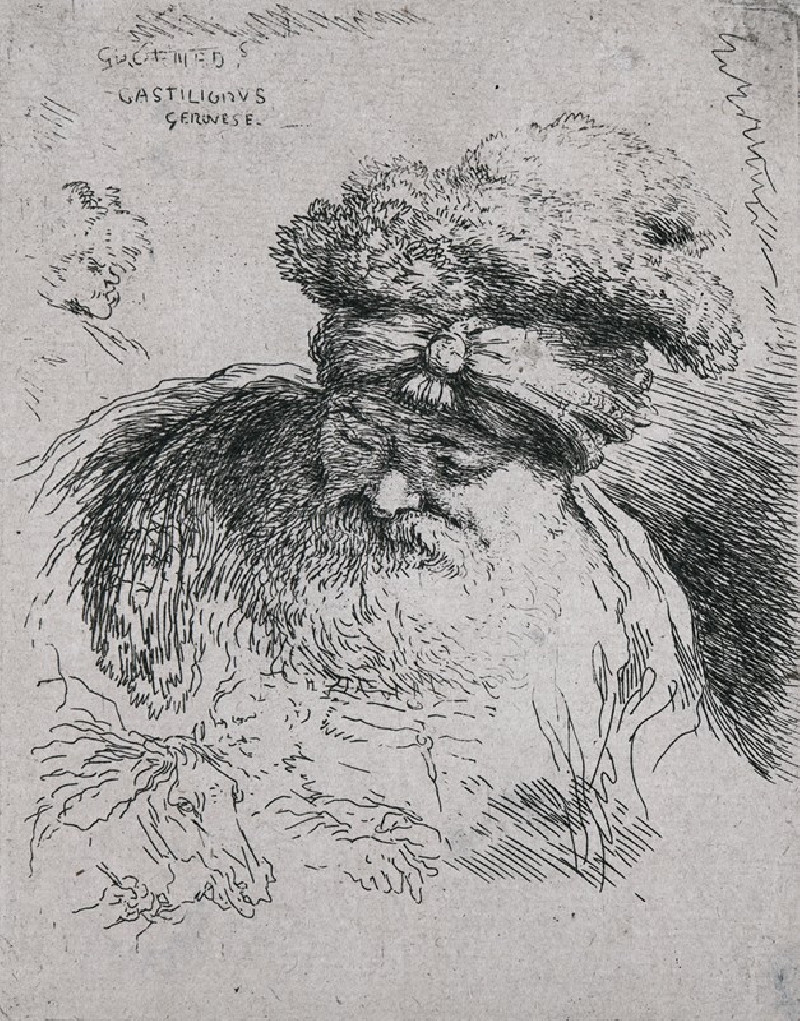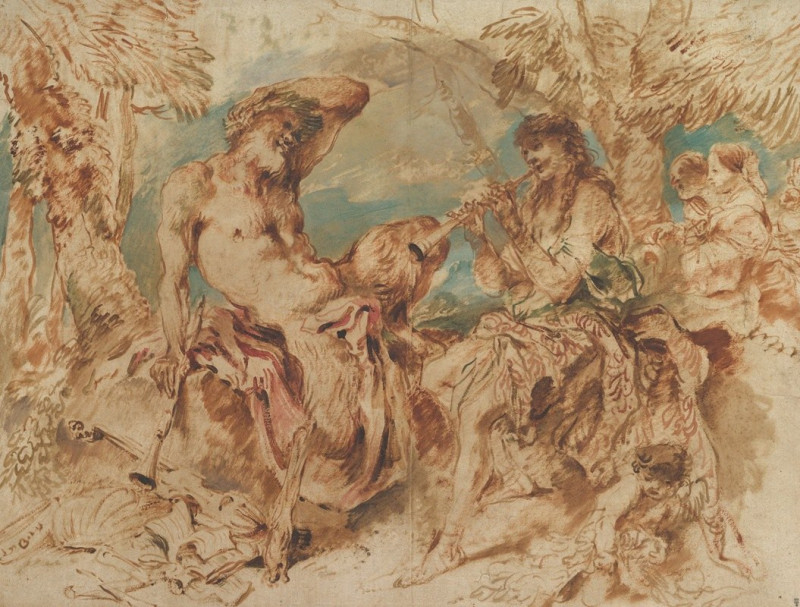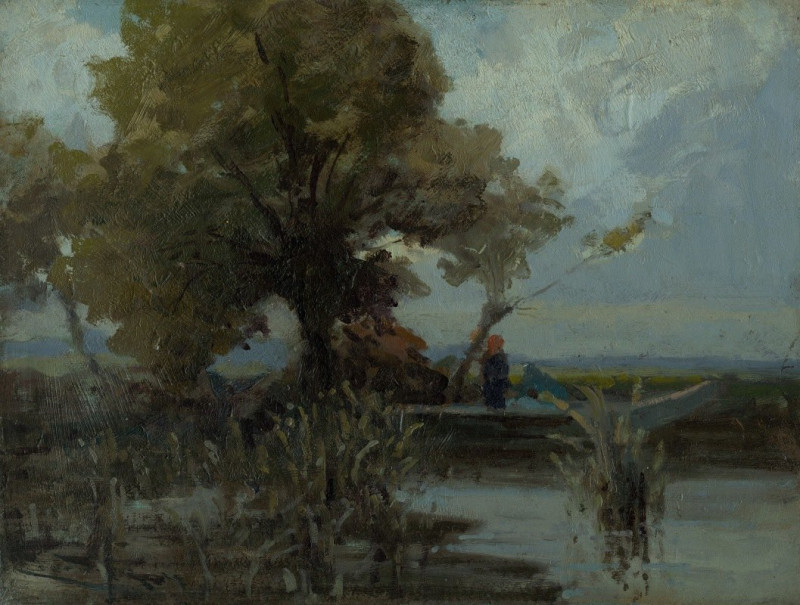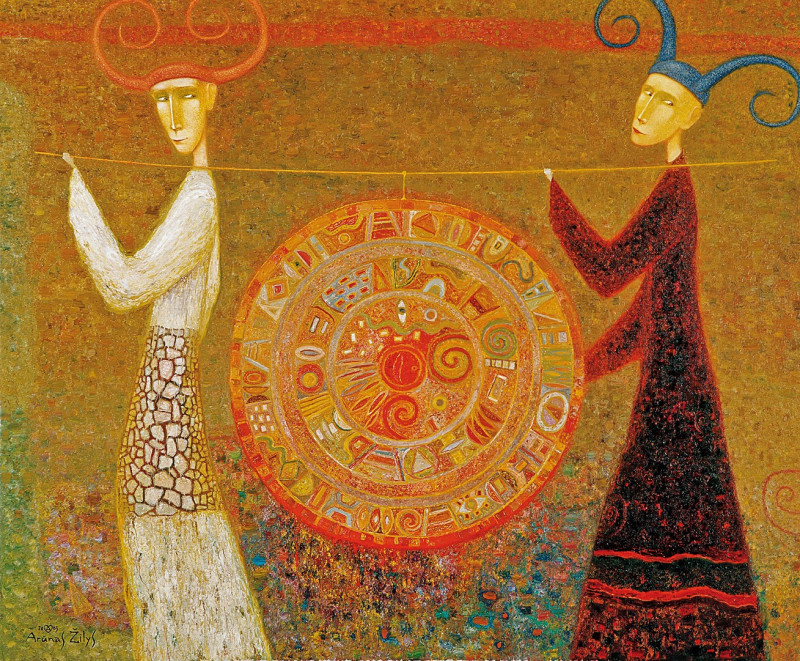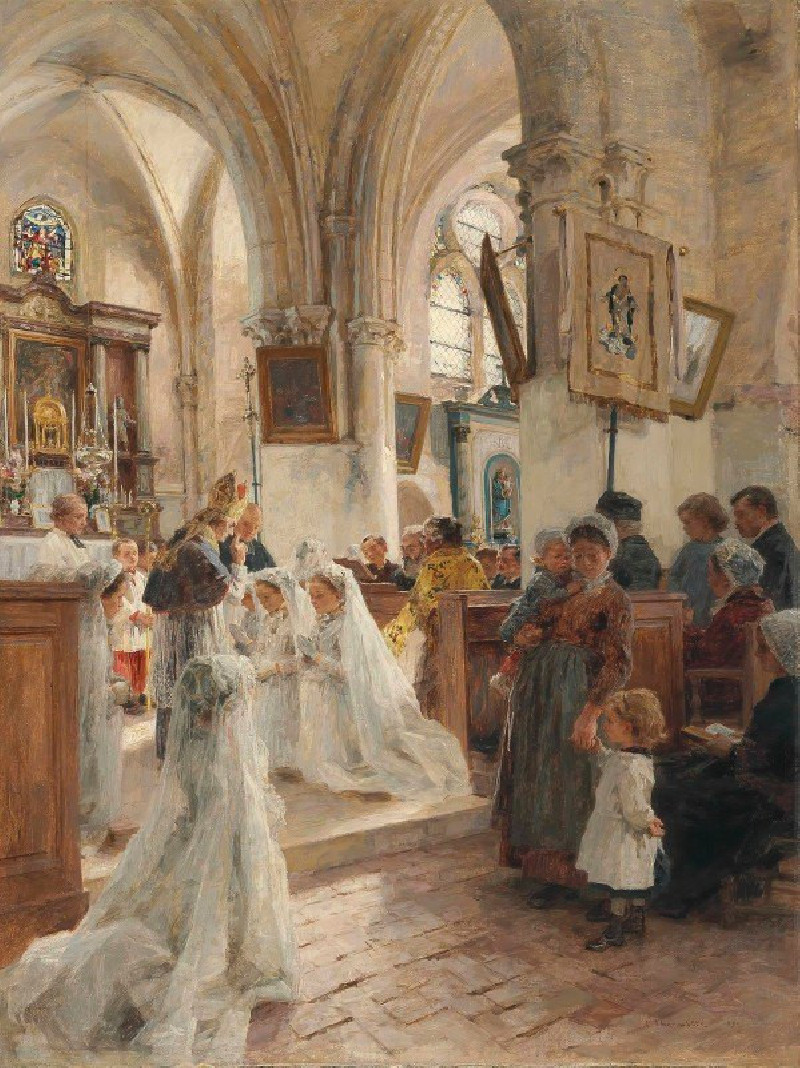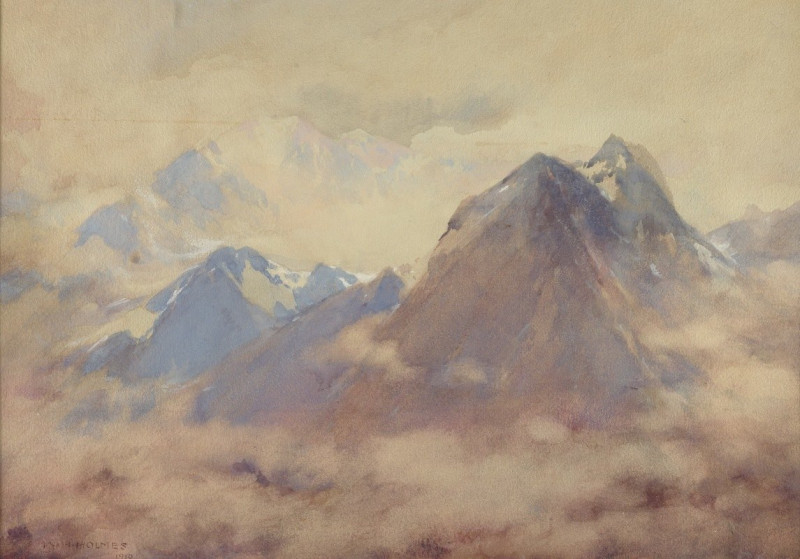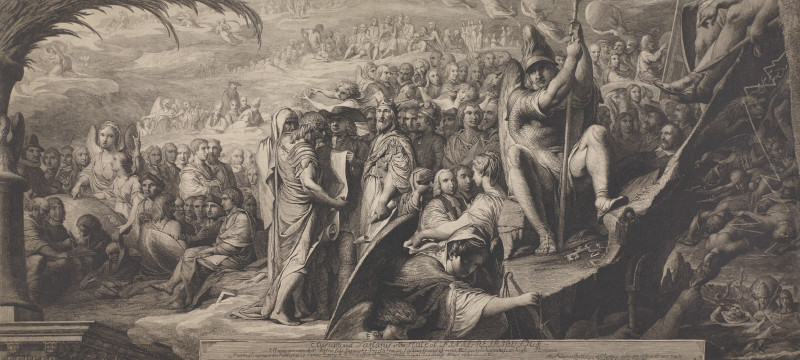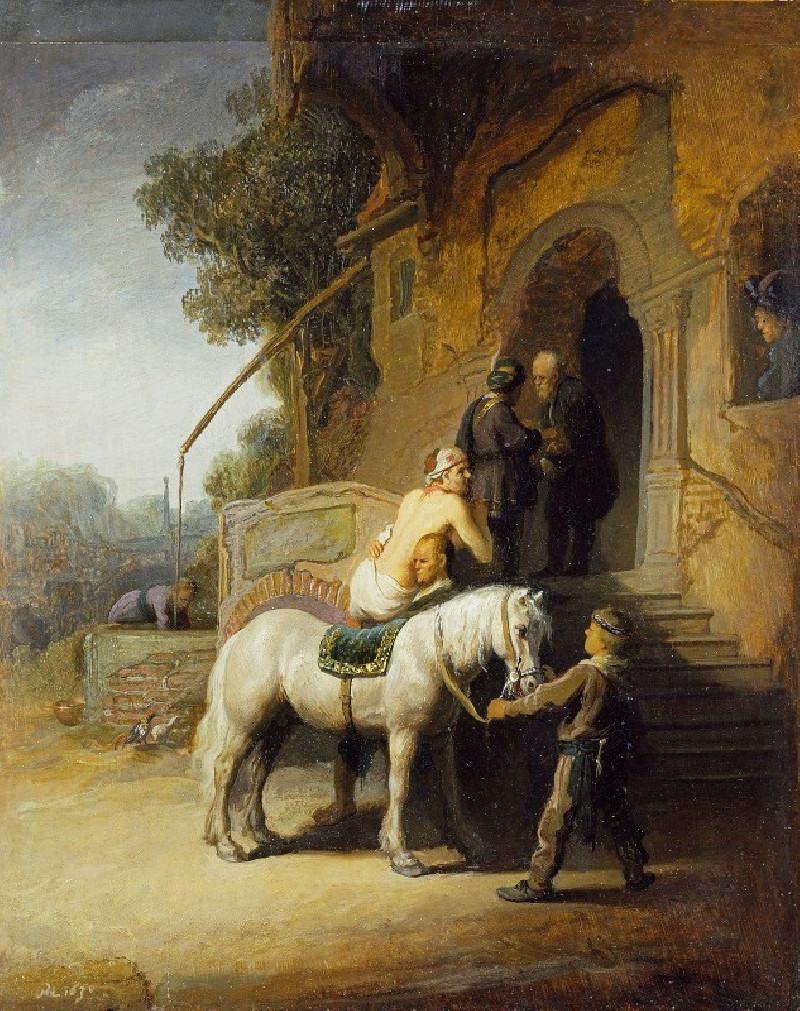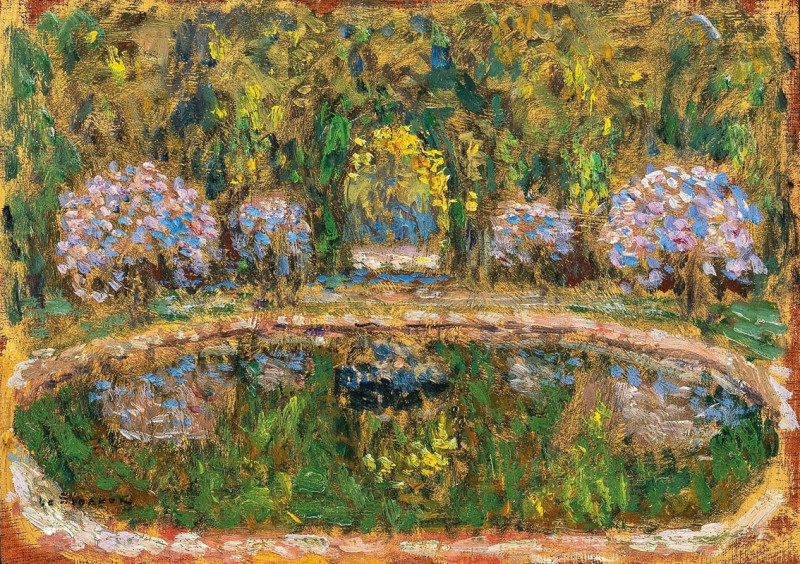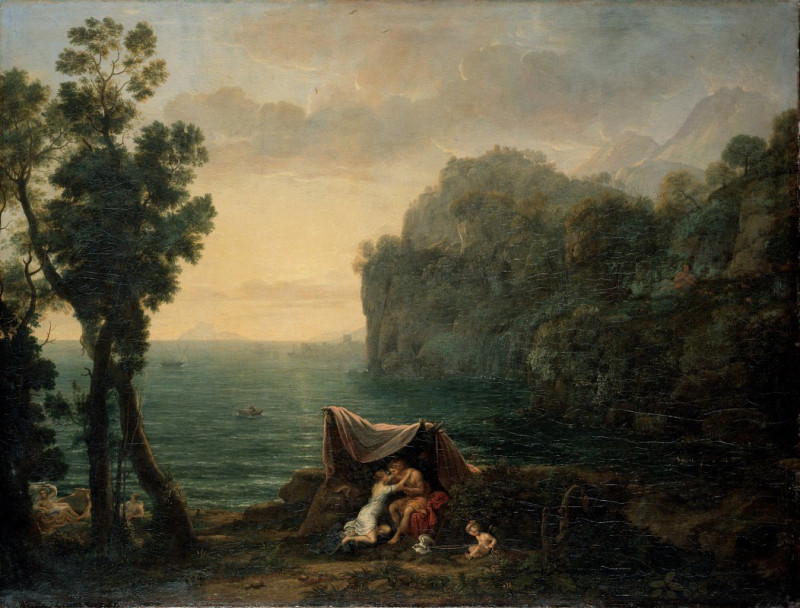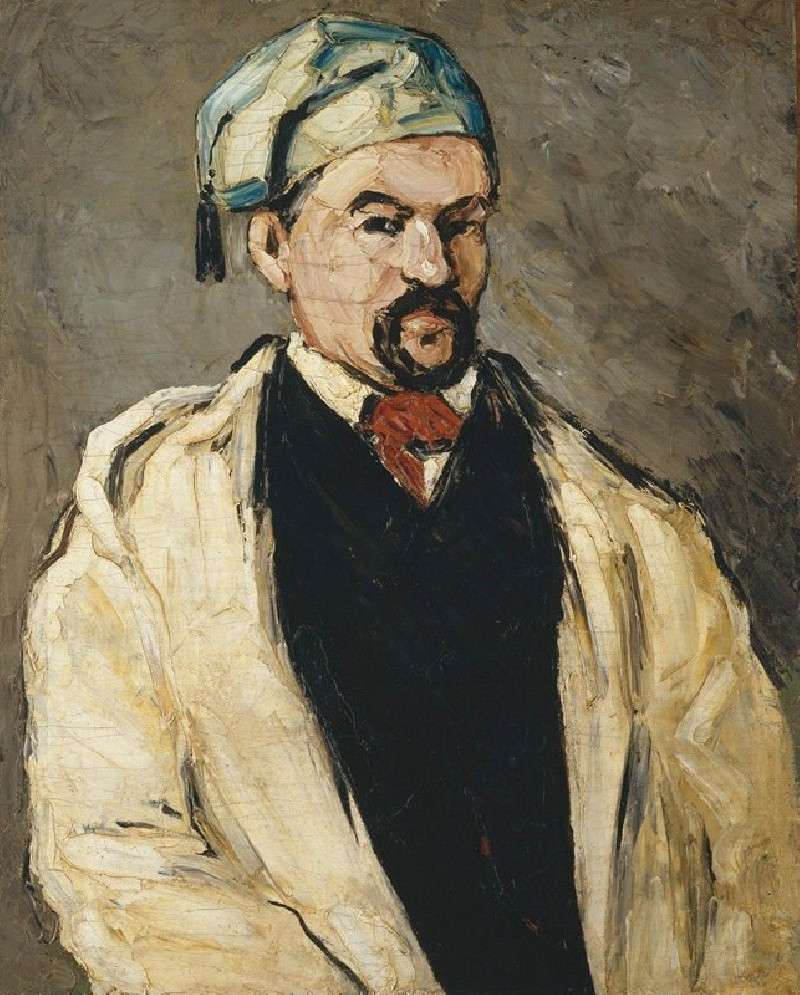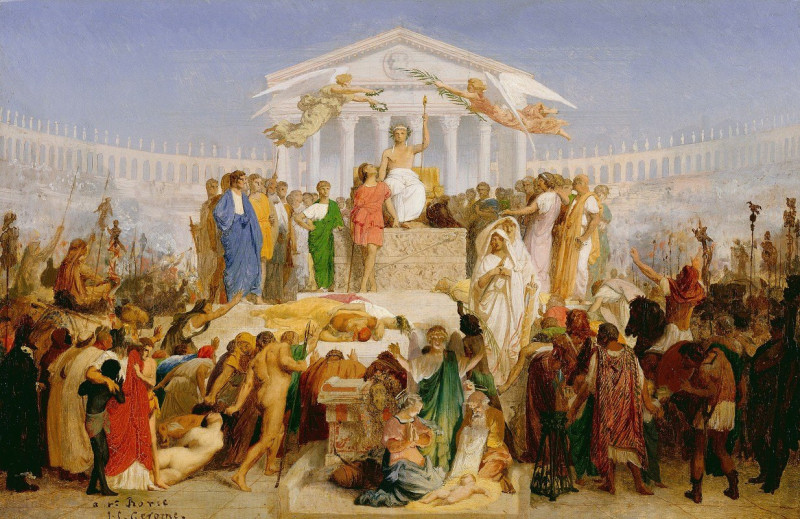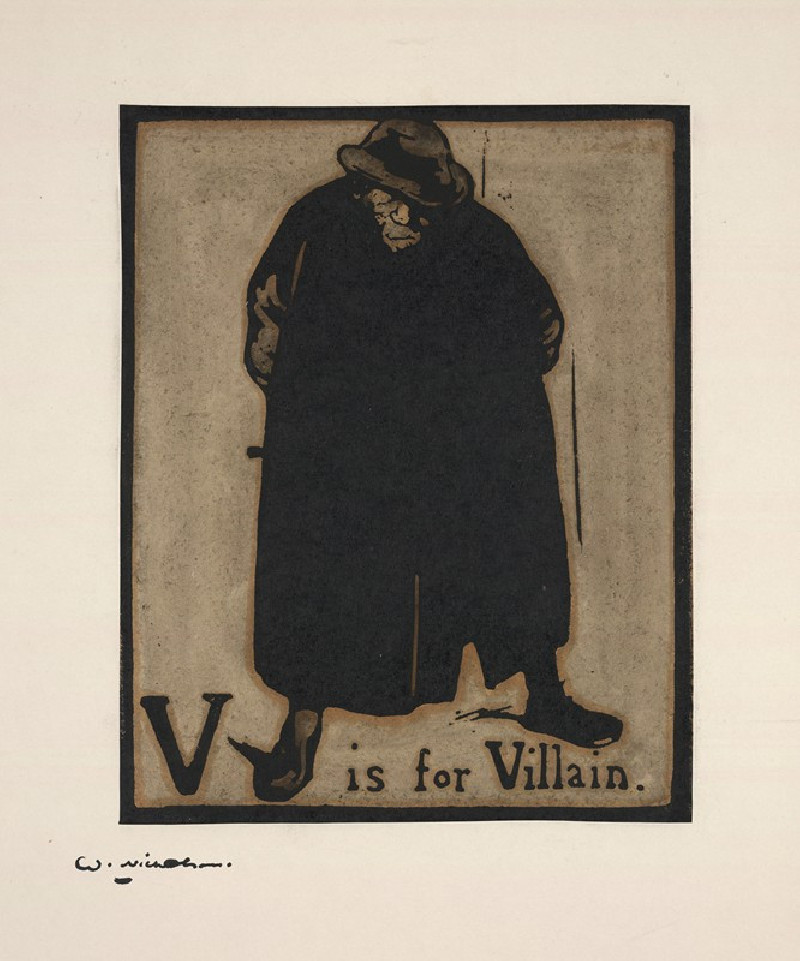A Family in a Desert Landscape (late 1640s)
Technique: Giclée quality print
Recommended by our customers
More about this artwork
Giovanni Benedetto Castiglione's "A Family in a Desert Landscape" is a captivating masterpiece from the late 1640s, offering a vivid glimpse into a pastoral world. This evocative ink drawing showcases Castiglione's mastery in creating dynamic compositions that convey movement and emotion.The artwork portrays a serene yet evocative scene of a family in a windswept desert environment. Central to the piece is a tender interaction between the family members, depicted with grace and intimacy. A mother, positioned at the heart of the drawing, is surrounded by her children, their poses and expressions reflecting a moment of nurturing and closeness. The way the figures are drawn with fluid, sweeping lines adds a sense of softness and warmth to their gathering.To the left, an imposing figure, possibly the father, stands with his back turned to us, gazing into the distance. His protective stance and the dynamic folds of his garment evoke a sense of guardianship and contemplation. Accompanying the family are two camels, exquisitely detailed, symbolizing the nomadic lifestyle adapted to a desert existence. These creatures are not merely incidental; they add to the narrative of survival and movement inherent in the family's life.The landscape itself is subtly rendered with gentle undulations and sparse vegetation, suggesting the harsh beauty of a desert. The presence of sparse trees and distant mountains further enhances the feeling of isolation and the vastness of their environment.Castiglione's use of wash and line technique in this drawing contributes a remarkable depth and texture, bringing the scene to life with a remarkable sense of realism and immediacy.
Delivery
Returns
Giovanni Benedetto Castiglione (23 March 1609 – 5 May 1664) was an Italian Baroque painter, printmaker and draftsman, of the Genoese school. He is best known now for his etchings, and as the inventor of the printmaking technique of monotyping. He was known as Il Grechetto in Italy and in France as Le Benédette.
He painted portraits, history paintings and landscapes, but came to specialize in rural scenes with more animals than human figures. Noah's ark and the animals entering the Ark was a favourite subject of his, and he devised a number of other new subjects from the early parts of the Old Testament with the patriarchs and their animals.

